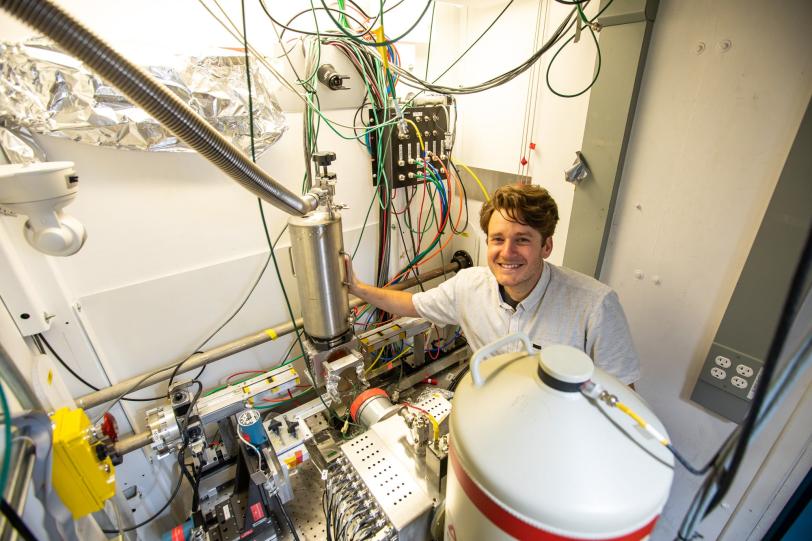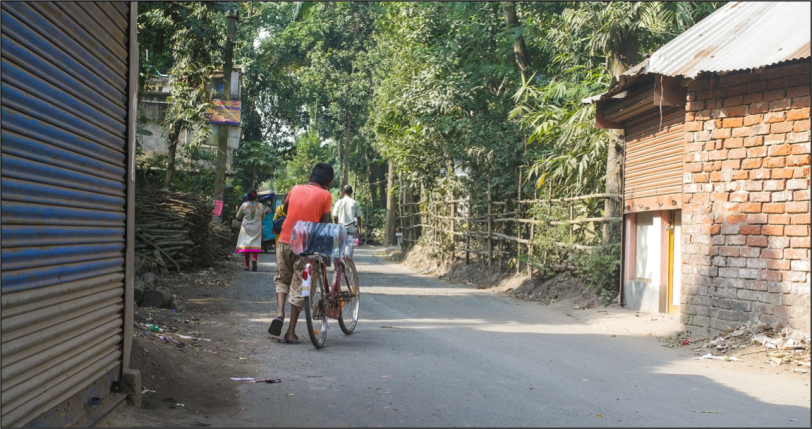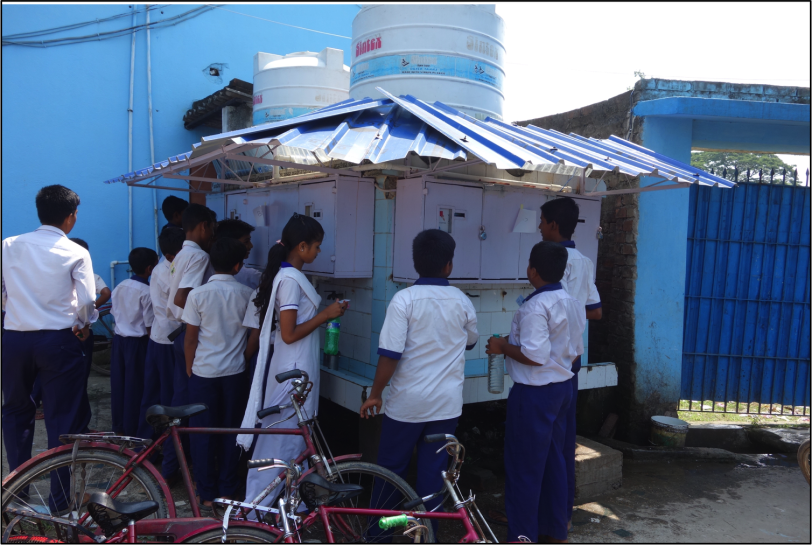Rust offers a cheap way to filter arsenic-poisoned water
In regions that lack the resources to treat the contaminated water, it can lead to disease, cancer, and even death.
By Ali Sundermier
When water flows deep underground, it often dissolves inorganic substances from mineral deposits in the earth’s crust. In many regions, these deposits contain arsenic, a naturally occurring element that is colorless, tasteless and odorless. Although its presence is barely noticeable, prolonged exposure to arsenic-contaminated water can lead to gangrene, disease and many types of cancer, resulting in major loss of income for millions of people and even death.
Because many regions lack the resources and infrastructure to treat their water by conventional means, they have no choice but to continue exposing themselves to these risks. The crisis of widespread arsenic contamination, particularly in rural South Asia, has been described as the largest mass poisoning in human history.
“Naturally occurring arsenic in groundwater is actually more common than you would think,” says Case van Genuchten, a researcher in the Geochemistry Department of the Geological Survey of Denmark and Greenland. “Many regions have centralized water treatment, which makes it pretty easy to remove. But in regions that don’t have a piped water supply and rely on groundwater wells, you have to think a little harder about how to implement sustainable water treatment solutions.”
Inspired by natural processes in soil that bind contaminants and filter them out, van Genuchten has been using iron oxides such as rust, which are abundant in soil, to filter out arsenic from groundwater. He leads experiments at the Department of Energy’s SLAC National Accelerator Laboratory that investigate low-cost methods of treating groundwater using only small amounts of electricity and steel or iron. The team’s most recent paper, which compares the arsenic-removing performance of different forms of rust has been published in Water Research.

The colors of rust
Rust forms when iron reacts with oxygen and moisture. This reaction causes the iron atoms to lose electrons, increasing the material’s oxidation state. Different oxidation states produce different colors, or forms, of rust. Each form has unique properties and reacts differently with arsenic.
The team uses X-rays from SLAC’s Stanford Synchrotron Radiation Lightsource (SSRL) to better understand how arsenic binds to different rust particles, an interaction that is being used to remove arsenic in actual purification processes at a water treatment plant located in a school in a rural village of West Bengal, India.
“What we do is take pieces of iron, which are easy to find, and insert them into pumped groundwater in a tank attached to a power supply, such as a car battery,” van Genuchten says. “The current from the battery corrodes the iron and produces rust. Arsenic binds to the surface of these rust particles, which can then be filtered out by gravity, or potentially, using magnets. Every kind of rust, from black to red to green, has a different atomic arrangement. By changing the way we apply current to the water, we can control the rust’s atomic structure and reactivity to optimize our system.”

Needle in a haystack
The researchers discovered that magnetite, a form of black rust found in many different types of rocks, is the most efficient for this process, working well even at low concentrations.
At SSRL, the team uses X-rays to determine the structure of magnetite particles and how arsenic forms chemical bonds with the mineral. By shining X-rays at samples of rust bound with arsenic, the researchers can knock electrons out of the arsenic atoms’ innermost shells, which makes it possible to detect arsenic atoms even at trace amounts that are as difficult to find as a needle in a haystack. This synchrotron-based technique, called X-ray absorption spectroscopy, uses X-rays with finely controlled energies to obtain information about how the arsenic binds with the iron and is one of the only methods capable of producing such detailed information on the behavior of trace toxic metals.
Through these experiments, the researchers found that magnetite has a unique structure compared to other forms of rust that enables it to form stronger bonds with the contaminant.
“The shape and size of the arsenic molecule was found to fit like a puzzle piece in the structure of magnetite,” van Genuchten says. “This leads to the incorporation of arsenic in the magnetite particle rather than simply bonding to the mineral surface.”
Real-world impact
Through this research, van Genuchten hopes to find ways to produce rust particles faster and better control how they react with arsenic so the water treatment system can be optimized to the point where it can be widely implemented. He says he enjoys how the project enables him to push the fundamental research forward even as it is being driven by clear applications and urgent needs.
“I started researching water treatment because I wanted to have a positive impact on the world,” he says. “Sometimes I get frustrated when the water treatment parts of my research do not go as planned, but then it helps to remember that I am also doing research from a fundamental perspective. The knowledge I generate about mineral and contaminant interactions is also important to understand how contaminants behave in the environment – for example how toxic metals move through groundwater and are trapped in soils and sediment.”
Despite the challenges, he adds that it’s always important to keep in view the real-world applications this work will have.
“I was there the first day that water was distributed to the children at the school in India,” he says. “The kids all have cards with electronic chips that they put against a little panel at a distribution kiosk, which then pumps out a liter of filtered water. It was so rewarding to see the excitement on their faces when they saw the water come out.”

This research was supported by the Dutch Organization for Scientific Research and also made use of the European Synchrotron Radiation Facility in Grenoble, France. SSRL is a DOE Office of Science user facility.
Citation: C. M. van Genuchten et al., Water Research, 1 January 2020 (10.1016/j.watres.2019.115170)
For questions or comments, contact the SLAC Office of Communications at communications@slac.stanford.edu.
SLAC is a vibrant multiprogram laboratory that explores how the universe works at the biggest, smallest and fastest scales and invents powerful tools used by scientists around the globe. With research spanning particle physics, astrophysics and cosmology, materials, chemistry, bio- and energy sciences and scientific computing, we help solve real-world problems and advance the interests of the nation.
SLAC is operated by Stanford University for the U.S. Department of Energy’s Office of Science. The Office of Science is the single largest supporter of basic research in the physical sciences in the United States and is working to address some of the most pressing challenges of our time.






